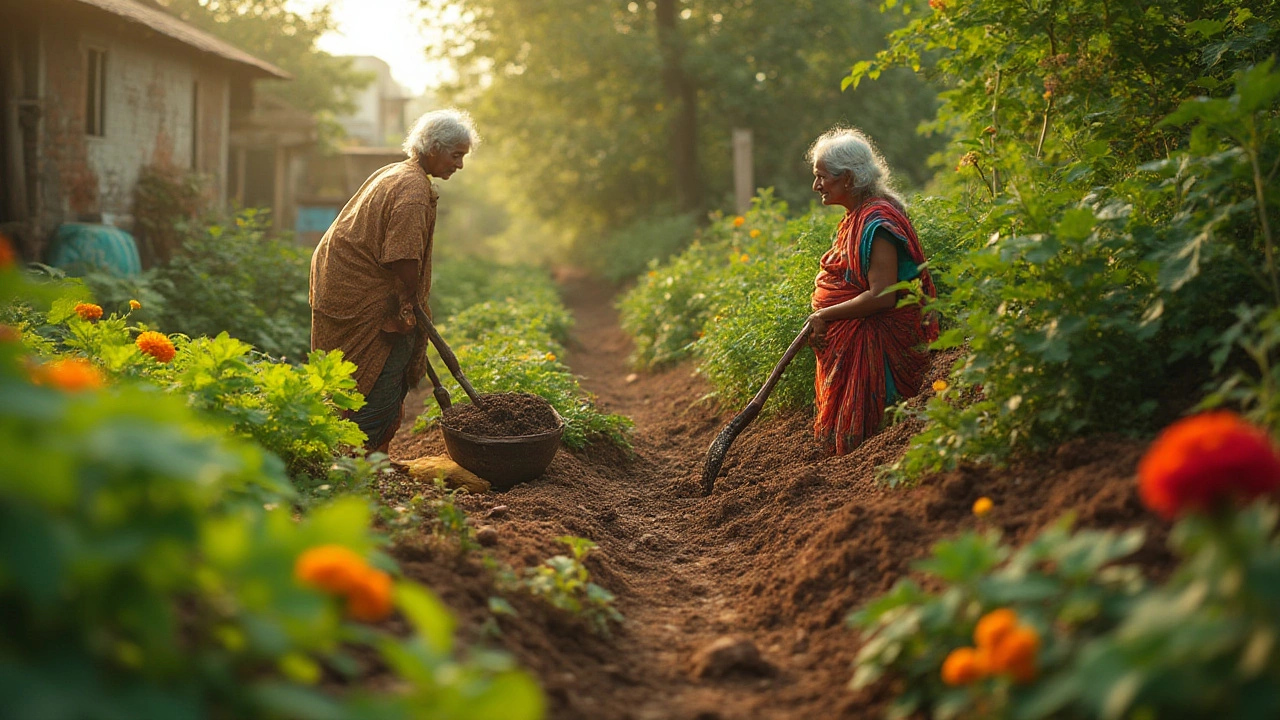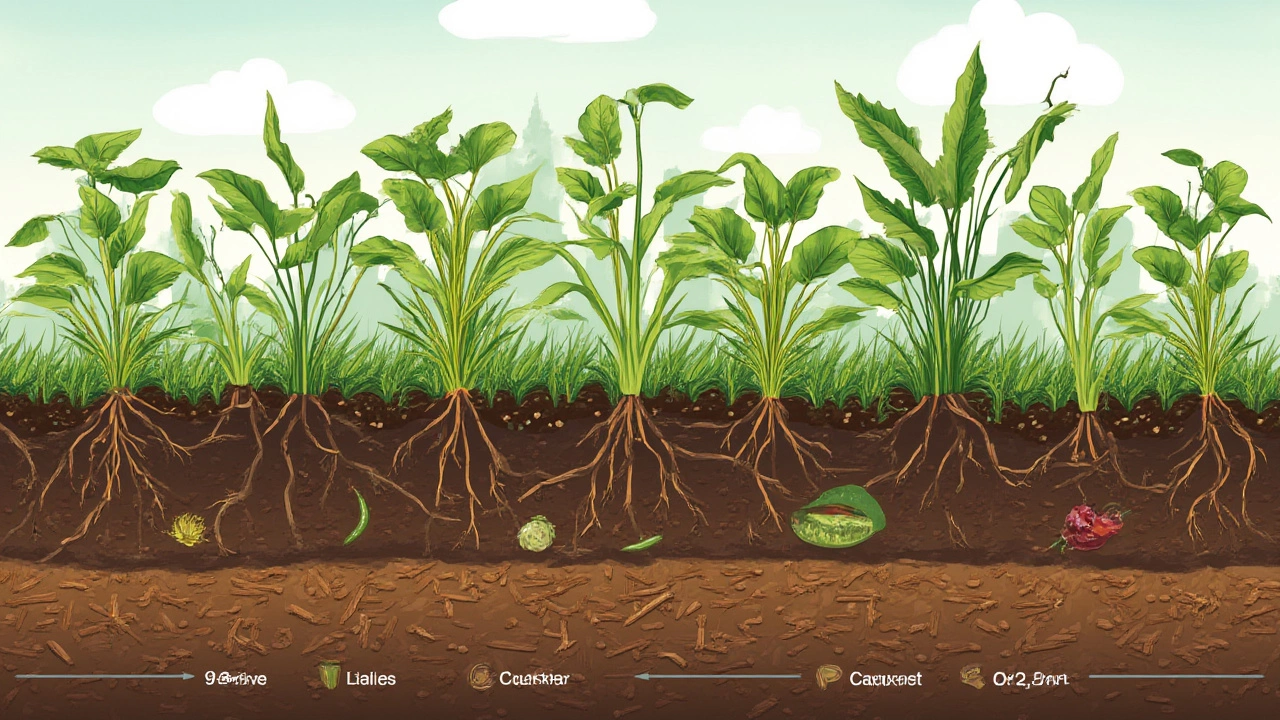Why No-Till Gardening: Benefits, Methods, and Tips for Richer Soil

Imagine spending less time digging and more time harvesting fresh tomatoes. No-till gardening flips the script on the way most of us learned to manage soil. Digging and turning dirt looks productive, but research tells a different story. The truth is, constantly churning up the earth destroys tiny underground ecosystems that actually do the grunt work for your garden. Several studies have shown how no-till methods can seriously improve soil health, cut down on weeds, and slash watering needs. Not only does it make for healthier plants, but it also saves your back from endless shovel work. When my wife Priya caught me reading about it late one night (she says I'm obsessed with dirt), I realized we had to try this with our backyard veggies. If you’re tired of heavy digging or just curious about building better soil with less effort, you’re going to want to see what no-till gardening is all about.
How No-Till Gardening Works And Why It Matters
No-till gardening is pretty much what it sounds like: you don’t dig or turn the soil. You leave it be, layering organic matter right on top. At first, the idea seems strange or even lazy — aren’t you supposed to turn over the soil in spring? But the science says otherwise. The act of tilling breaks apart soil structure, reduces moisture retention, and disrupts the delicate web of fungi, bacteria, and worms that secretly run your garden’s underground universe. Want proof? The USDA published a table that compared tilled plots to no-till beds — the no-till plots retained 30-50% more moisture and had nearly double the earthworm count after a single season.
| Method | Soil Moisture | Earthworm Count (per sq. ft.) |
|---|---|---|
| Tilled | Low | 10 |
| No-Till | High (+35%) | 19 |
There’s a direct connection between not disturbing the soil and building up its organic content over time. The leaf litter, compost, and mulch you throw on top slowly break down, feeding hungry microbes and worms. These critters drag that goodness down naturally, no shovel or hoe needed. The result? A rich, spongy soil that’s teeming with life—and incredibly forgiving for most vegetables and flowers. The no-till approach mimics what happens in a wild forest or meadow. There, nature never tills, yet the soil is often richer and more productive than anything you’ll find in a plowed field. Pretty wild, huh?
There's also an environmental angle. Every time you till, you release a burst of carbon that was locked in the soil, which can add up over time. No-till methods help lock that carbon away, making your backyard a tiny carbon sink; good news for anyone thinking about sustainability. The Journal of Soil and Water Conservation reported that well-managed no-till gardens yield similar, sometimes even higher, crop results compared to traditional tilled plots.
The Science Behind Healthy, Living Soil
Think of soil as an underground city packed with millions of invisible workers. Fungi, especially mycorrhizal fungi, stretch for meters underground, connecting plant roots and helping shuttle nutrients from one corner to another. When you till, you slice up this underground subway system, forcing those workers to spend all their energy rebuilding infrastructure instead of delivering nutrients. That’s a huge setback for your tomatoes, peppers, and carrots. According to a study from Rodale Institute, undisturbed soil grows significantly more root mass and supports better drought resilience.
You’ll also notice a big change in earthworm activity. Leo, our golden retriever, sometimes tries to "help" by digging up our compost heap, but he can’t match the sheer effort of worms working undisturbed. They pull leaf litter under the surface, munching and transforming it into richer, fluffier soil. Earthworm castings are total fertilizer gold. Cornell University researchers found 3-7 times higher worm populations in no-till beds after just two seasons—enough to transform sandy, dead dirt into fertilizer factories!
No-till gardens also hold on to water like a sponge. The thick layer of mulch and decaying leaves shades the soil, limits evaporation, and prevents hard crusts from forming on top. Even on the hottest Mumbai days, our beds stay moist inches below the surface, which cuts watering chores in half. Plus, healthy soil drains better, so during monsoons, roots don’t drown. All that life underground also means fewer diseases. Fungal networks, in particular, can even help plants fight off certain pathogens by defending their host from invaders. This isn’t just some fringe gardening tip—these are well-documented, measurable benefits from letting soil life thrive.”
"Soil should be treated as a living ecosystem rather than an inert growing medium," says Dr. Elaine Ingham, internationally recognized soil microbiologist. "When we nurture that system, plants practically look after themselves."

No-Till Gardening Methods And Tips For Every Yard
Convinced by the science but wondering how to pull it off in your own patch of earth? No-till gardening works in small city plots, sprawling vegetable patches, and even big community gardens. Here’s how you can start—no fancy equipment needed. First, pick your spot and clear away any big weeds or debris. Don’t dig—just smooth out the existing surface a bit. Lay down thick layers of newspaper or cardboard over the soil; this blocks light and smothers grass or weeds but breaks down within months.
On top of that, start piling on organic matter. You can use leaves, straw, untreated grass clippings, or compost. I’m always on the lookout for bags of leaves neighbors put out in fall—it’s perfect, free mulch. Aim for at least 5-10 centimeters, more if you have the material. Water it all in to help kick-start decomposition and attract worms. Within a few weeks, you’ll notice the lower layers settling as soil life gets to work.
When you’re ready to plant, just pull the mulch aside and tuck seeds or seedlings right into the ground underneath. For bigger plants like tomatoes or squash, you can mix a little extra compost into the hole, but there’s rarely a need to till the whole thing. As crops grow, refresh the mulch every couple of months to keep weeds down and nutrients flowing. If you spot weeds sneaking through, just add another layer—don't yank them and disturb the soil. It works like nature’s weed barrier.
- Tip: Let some leaves or plant trimmings stay on the ground after harvest. They’ll feed the next round of crops.
- Companion planting (putting different types of plants together) helps build pest resistance and diversity right from the start.
- If you’re tight on space, try no-till methods in grow bags or raised beds—no difference in results.
- Don’t stress about perfect "ingredients." Any natural, non-chemical organic waste works. Even kitchen trimmings (avoid meat or dairy) can go under mulch.
The real trick is patience. The first year, you might see some stubborn weeds pushing through or the soil might feel different underfoot. Stick with it. By year two, digging becomes a distant memory, and the earth feels far more alive. If you’re growing veggies, expect better yields and tastier, healthier produce. Flowers bloom more intensely, bees flock in, and the whole garden just feels… happier. As a bonus, when Leo decides to roll in the flower bed, I know he won’t get covered in mud from tilled-up earth!
Addressing Myths And Common Questions About No-Till
No-till gardening sometimes sounds too good to be true. People often ask, “Won’t all those weeds take over?” or, “How does anything grow without digging?” Some even worry pests will have a field day hiding out under thick mulch. Let’s look at these one by one—because the answers might surprise you.
First, the weed question. Letting soil rest doesn’t mean weeds win. In fact, a steady layer of mulch shades seeds and makes it tough for most weeds to sprout. It’s a bit like making a bed and putting a blanket over the troublemakers. Yes, some persistent perennials might poke through the first year—think couch grass or bindweed—but simply add more layers. Each season, fewer weeds survive as their life cycle gets choked out. In our garden, by the third year, we were pulling maybe three weeds a month. If only cleaning up after Leo was this easy!
Then, there’s the question of plant growth. No-till doesn’t mean no food for plants. Quite the opposite. As organic matter breaks down, it slowly releases a buffet of minerals and nutrients—far more stable than what comes from a quick chemical fertilizer hit. This slow-release effect matches what roots want: steady, long-term feeding. Tomatoes, peppers, squashes, greens, and root crops all do well. Even fussy plants like carrots or onions thrive once the soil is soft from worm digging. There’s a bit less instant gratification compared to chemical fertilizers, but your garden repays you with better health and flavor.
What about bugs? While it’s true that some pests might find shelter under mulch, so do their predators. Spiders, beetles, and even birds love hanging out in mulch layers, keeping pest numbers balanced. Still, a little monitoring helps. Walk your beds now and then, pull back the mulch in suspect spots, and hand-pick hungry invaders. Natural garden life tends to find its balance if you don’t disturb the cycle with chemicals or frequent digging.
Finally, some folks think no-till takes too long, or isn’t for impatient gardeners. Fair concern—but nature works on its own clock. The first season is usually about transition and building soil health. From the second season onward, things get easier. There are even reports from community gardens in Bangalore showing higher yields after two years of no-till, versus tilled beds, with fewer hours spent on maintenance. Now that’s a payoff.
Switching to no-till gardening has made gardening feel less like a chore and more like a partnership with nature. You still get your hands dirty, but in a way that builds, not breaks, what’s below your feet. Priya laughs that my hands are now always caked with crumbly soil, but when your tomatoes taste this good, who cares?





